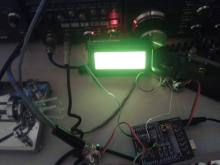It occurs to me that I never explained why I'm re-writing the keyer software. To recap the project up to this point: I have wanted a CW memory keyer for a long time, and I had wanted to do some project with the Arduino. However, I didn't think that my circuit design skills were up to designing the necessary hardware and I didn't really want to write the software, and it occurred to me that someone else might have decided to use the Arduino as the basis of a memory keyer and have designed hardware and written the software necessary to make it do what I want.

